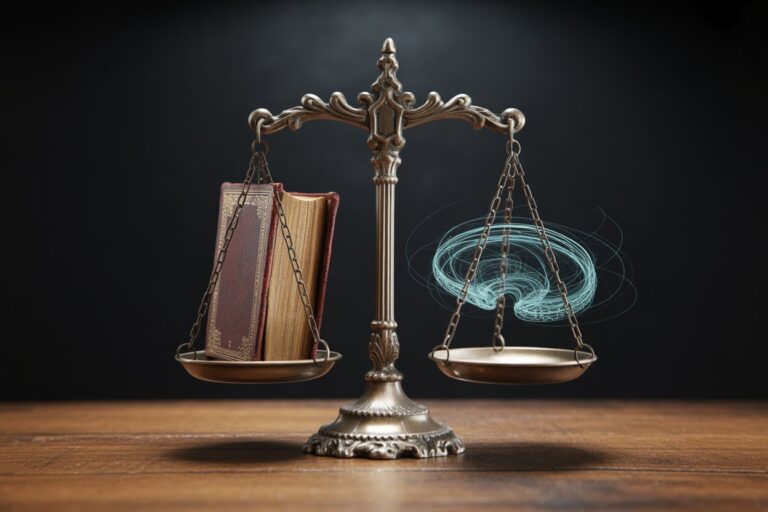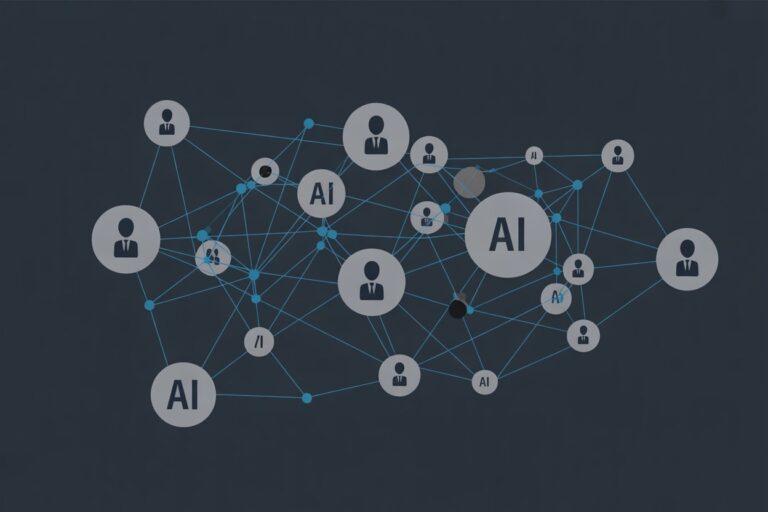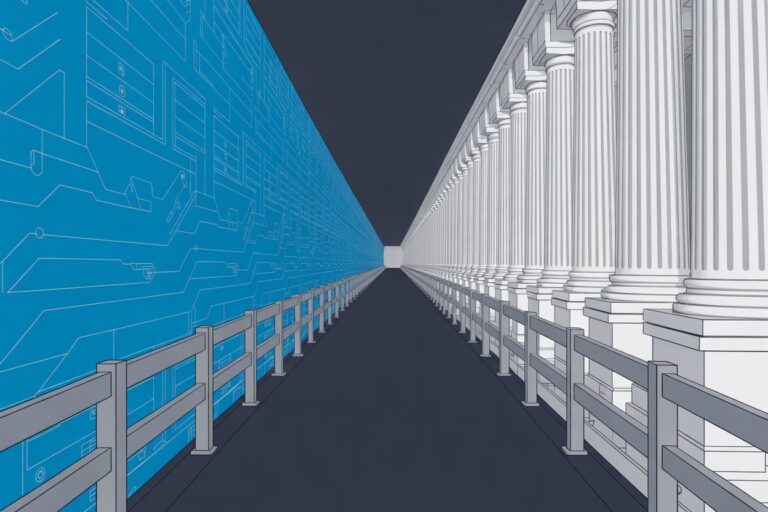How Utah Became a Laboratory for AI-Driven Legal Innovation
Utah’s Artificial Intelligence Policy Act became the nation’s first comprehensive state law governing generative AI when it took effect in May 2024. Ambitious disclosure requirements for professionals were recalibrated through 2025 amendments that narrowed obligations while extending the experimental “learning lab” framework. For the legal profession and regulated industries, Utah’s evolving model offers both compliance guardrails and innovation pathways, positioning the state as both regulator and incubator in the race to govern artificial intelligence.
The First State Framework for Generative AI
On March 13, 2024, Utah Governor Spencer Cox signed Senate Bill 149, the Utah Artificial Intelligence Policy Act, into law. Effective May 1, 2024, the statute became the first comprehensive state law aimed specifically at regulating generative AI. The Act defines “generative artificial intelligence” as systems that are trained on data, interact with people using text, audio, or visual communication, and generate non-scripted outputs similar to human-created content with limited oversight. It mandates disclosure when consumers interact with AI rather than humans and establishes an Office of Artificial Intelligence Policy to oversee implementation.
The combination is rare: a state simultaneously writing guardrails and inviting experimentation. The Office of AI Policy, which officially launched on July 8, 2024, acts as both rulemaker and research hub. It issues guidance on transparency while hosting pilot projects in sectors including health care, finance, and law. That dual mandate reflects Utah’s broader regulatory philosophy, first tested in its legal regulatory sandbox launched in August 2020.
2025 Amendments: A Narrower, Risk-Based Framework
The original Act imposed broad disclosure requirements on all “regulated occupations,” covering any profession requiring a state license or certification, including attorneys, physicians, accountants, and other licensed professionals. Under the 2024 version, these professionals had to prominently disclose AI use at the outset of any consumer interaction, regardless of risk level.
In March 2025, Utah enacted three significant amendments that took effect May 7, 2025, fundamentally reshaping the disclosure framework. Senate Bill 226 narrowed disclosure requirements to “high-risk artificial intelligence interactions,” defined as generative AI use involving the collection of sensitive personal information combined with significant decision-making in medical, mental health, legal, or financial contexts. The law now requires regulated professionals to disclose AI use only when these high-risk criteria are met, rather than in every interaction.
Senate Bill 332 extended the Act’s sunset date from May 2025 to July 1, 2027, providing additional time to evaluate the framework’s effectiveness. House Bill 452 created specialized regulations for mental health chatbots, requiring suppliers to disclose AI use before access, prohibit advertising during interactions, and restrict the sale of individually identifiable health information. These amendments reflect what Senator Kirk Cullimore, the Act’s sponsor, acknowledged was necessary refinement: the original language “swept too broadly, encompassing a range of businesses that likely are not using AI in a way that poses significant harm to consumers.”
The 2025 amendments also established a safe harbor provision. Entities whose generative AI systems clearly and conspicuously disclose their non-human nature both at the outset and throughout interactions are shielded from certain enforcement actions, incentivizing proactive transparency over reactive compliance.
What Lawyers Need to Know
For attorneys, the Act’s scope extends to any situation meeting the high-risk threshold. A law firm using AI to conduct client intake, draft legal documents, or provide substantive legal advice in areas involving significant personal decisions now faces disclosure obligations when those interactions collect sensitive information.
Examples of AI tools that trigger disclosure: A chatbot conducting initial consultations about divorce proceedings or criminal defense would require disclosure. AI-powered document review tools analyzing privileged communications or generating substantive legal advice in family law, criminal defense, or estate planning matters similarly trigger the high-risk definition. Client intake systems using generative AI to collect sensitive personal and financial information while providing preliminary legal guidance fall under disclosure requirements.
Examples of AI tools that likely do not trigger disclosure: Routine administrative AI tools that merely schedule appointments, send calendar reminders, or manage billing likely fall outside the high-risk definition. Document automation systems that populate standard forms without providing substantive legal advice, or legal research tools that analyze case law without client interaction, generally avoid disclosure requirements.
The statute does not alter existing ethical duties but amplifies them. Under Model Rule 1.1, lawyers must maintain technological competence, including understanding the risks of automated tools. Disclosure alone does not satisfy that duty. Law firms are expected to supervise AI outputs with the same diligence they apply to junior associates, verifying every citation and legal statement before submission. The Act makes clear that attempting to blame generative AI for errors is not a defense to consumer protection violations—lawyers remain liable for AI-generated mistakes.
Enforcement carries real consequences. The Utah Division of Consumer Protection may impose administrative fines up to $2,500 per violation. Courts can impose additional penalties up to $5,000 for violations of court or administrative orders, along with injunctions, disgorgement of profits, and attorney’s fees. The Act does not provide a private right of action, concentrating enforcement authority with state regulators. As of October 2025, no public enforcement actions have been reported, but the framework establishes clear liability standards for future violations.
The AI Learning Laboratory
Utah’s AI Learning Laboratory, established within SB 149 itself, offers a controlled environment where companies, startups, and professional firms can test AI systems with regulatory oversight. The program, administered by the Office of AI Policy, allows participants to seek temporary “regulatory mitigation agreements” that serve as waivers from certain state rules while demonstrating consumer protection safeguards.
For legal innovators, this means the potential to pilot AI tools for document automation, e-discovery triage, or pro bono client screening without fear of premature enforcement. Mitigation agreements can last up to 24 months (12 months with one 12-month extension) and may include reduced fines for violations and cure periods before penalties are assessed. Eligibility requires demonstrating technical expertise, financial stability, consumer benefits, and a commitment to safeguards and risk monitoring.
The design mirrors Utah’s earlier legal sandbox, which since August 2020 has permitted non-lawyer ownership of law-related businesses under Utah Supreme Court supervision. Extended through 2027, the sandbox allows entities to test new legal service models that would otherwise violate unauthorized practice rules. Following policy changes in late 2024, the number of approved participants declined as the court refocused eligibility on models that show measurable potential to expand access to justice. By extending the sandbox approach to AI, Utah treats technology as a professional experiment, not an existential threat.
Compliance and Opportunity
The practical question for law firms is how to integrate AI without violating disclosure duties. For high-risk interactions, clear, prominent disclosure at the outset of the interaction is required. The statute does not prescribe specific language, but the disclosure must be conspicuous enough that a reasonable consumer would understand they are interacting with an AI system rather than a human professional.
Firms should document their AI disclosure practices, maintain records of when and how AI is used in client matters, and train attorneys to recognize when the high-risk threshold is met. The Act’s safe harbor provision provides additional protection: systems that clearly identify themselves as AI both initially and throughout the interaction receive enhanced legal protection against certain enforcement actions. This incentivizes proactive transparency over minimalist compliance.
For firms interested in testing novel AI applications, the Learning Laboratory offers a structured pathway. Applicants must demonstrate technical competence, financial stability, and a plan for consumer protection. In exchange, participants gain regulatory breathing room to innovate while contributing data that shapes future policy. This approach reflects Utah’s broader philosophy: regulation should enable innovation, not merely constrain it.
Utah’s Influence Beyond State Lines
Utah’s framework has already influenced other states. Colorado enacted the Colorado Artificial Intelligence Act in 2024, focusing on high-risk AI systems in consequential decisions. Texas passed House Bill 2060 in 2025, requiring businesses to disclose AI use in certain customer interactions. Indiana, Minnesota, and Washington are considering regulatory sandboxes modeled on Utah’s legal innovation experiment. The question is no longer whether states will regulate AI, but which model they will choose.
Utah’s approach pairs disclosure requirements with innovation incentives. The 2025 amendments show the state refining that approach in real time, narrowing overly broad rules while preserving core consumer protections. For lawyers navigating this landscape, the lesson is adaptability. Compliance frameworks built for the 2024 statute must now adjust to the 2025 amendments. Firms that treat disclosure as a static checkbox will struggle, while those that embed AI transparency into client communications will thrive.
The Act’s sunset date of July 1, 2027, ensures continued evaluation. By then, Utah will have three years of data on how disclosure requirements affect consumer trust, innovation, and access to legal services. The Learning Laboratory will have tested multiple AI applications under regulatory oversight. And the legal sandbox will have demonstrated whether non-traditional service models can expand access without increasing consumer harm. These experiments will inform not only Utah’s next iteration but also the policies adopted by states watching closely.
Moving Forward
Utah’s Artificial Intelligence Policy Act, as amended in 2025, establishes a framework that is both prescriptive and experimental. It requires disclosure for high-risk AI interactions while creating space for innovation through the Learning Laboratory. For lawyers, compliance means understanding when AI use crosses the high-risk threshold, implementing clear disclosure practices, and maintaining the same ethical standards that govern human judgment. The statute does not treat AI as categorically different from other tools; it simply demands transparency when that tool makes decisions affecting consumers in sensitive contexts.
The state’s dual approach, combining regulation with experimentation, offers a model for how governments can respond to rapidly evolving technology without stifling beneficial innovation. As other states develop their own AI policies, Utah’s experience provides both cautionary lessons and promising pathways. The 2025 amendments demonstrate that iterative refinement is not only possible but necessary as policymakers gather data and stakeholders provide feedback.
For legal professionals, the Act represents an opportunity as much as a compliance obligation. Firms that adopt AI tools thoughtfully, with proper disclosure and oversight, can improve efficiency, expand services, and reach underserved populations. Those that ignore the requirements risk enforcement actions and reputational harm. The choice, as Utah’s framework makes clear, is not whether to use AI, but how to use it responsibly.
Sources and Further Reading
- ABA Journal, “New rules issued for Utah’s regulatory sandbox” (2025)
- American Bar Association, Model Rules of Professional Conduct, Rule 1.1 Comment [8] (Technological Competence)
- Davis Polk & Wardwell LLP, “Utah scales back reach of generative AI consumer protection law” (July 2025)
- Davis Wright Tremaine LLP, “Utah Enacts Consumer Disclosure Requirements for Businesses Using Bots and Generative AI” (April 2024)
- Davis Wright Tremaine LLP, “Utah Enacts Multiple Laws Amending and Expanding the State’s Regulation of the Deployment and Use of Artificial Intelligence” (April 2025)
- Holland & Knight LLP, “Utah Legislature Passes Trio of AI Amendments” (March 2025)
- Institute for Civility in Government, “Indiana Supreme Court Approves Legal Regulatory Sandbox Program in State” (October 28, 2024)
- Nelson Mullins, “Texas Legislature Passes House Bill 149 to Regulate AI Use” (June 2025)
- Office of Artificial Intelligence Policy, State of Utah
- Perkins Coie, “New Utah AI Laws Change Disclosure Requirements and Identity Protections, Target Mental Health Chatbots” (2025)
- Sheppard Mullin Healthcare Law Blog, “Utah Enacts AI Amendments Targeted at Mental Health Chatbots and Generative AI” (May 2025)
- Skadden, “Utah Becomes First State to Pass Comprehensive AI Law” (April 2024)
- Stanford Law School Legal Aggregate, “Regulatory Innovation at the Crossroads: Five Years of Data on Entity-Regulation Reform in Arizona and Utah” (June 2, 2025)
- TrustArc, “Understanding the Utah Artificial Intelligence Policy Act” (July 2025)
- Utah Courts, “Utah Supreme Court to Extend Regulatory Sandbox to Seven Years” (May 3, 2021)
- Utah Department of Commerce, “The Utah Department of Commerce Announces the Official Launch of the Utah Office of Artificial Intelligence Policy” (July 8, 2024)
- Utah Department of Commerce, “Utah Department of Commerce’s Office of Artificial Intelligence Announces First Regulatory Mitigation Agreement” (December 2, 2024)
- Utah Legislature, House Bill 452 (Artificial Intelligence Applications Relating to Mental Health), 2025 Session
- Utah Legislature, Senate Bill 149 (Utah Artificial Intelligence Policy Act), 2024 Session
- Utah Legislature, Senate Bill 226 (Artificial Intelligence Consumer Protection Amendments), 2025 Session
- Utah Legislature, Senate Bill 332 (Artificial Intelligence Policy Amendments), 2025 Session
- Utah Office of Legal Services Innovation, Legal Regulatory Sandbox
- Utah Office of Legal Services Innovation, Innovation Office Metrics (August 2025)
- Varnum LLP, “State-Level AI Regulations Enacted in 2024” (May 2025)
- Wiley, “Utah Adopts New AI Disclosure Law that Goes Into Effect on May 1, 2024” (2024)
This article was prepared for educational and informational purposes only. It does not constitute legal advice and should not be relied upon as such. All statutes and sources cited are publicly available through government websites and reputable legal publications. Readers should consult professional counsel for specific legal or compliance questions related to AI use in law practice.
See also: Oregon Becomes Testing Ground for AI Ethics Rules as Fabricated Case Law Spreads







